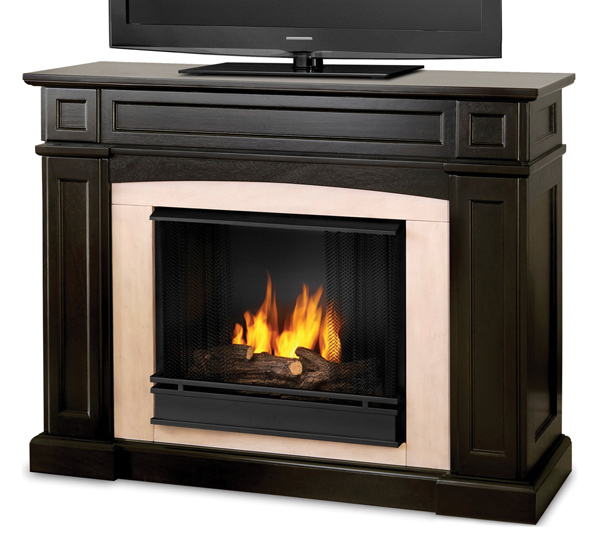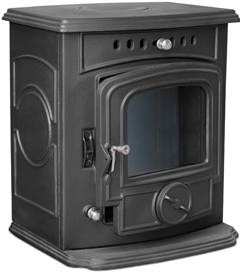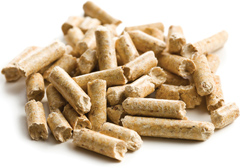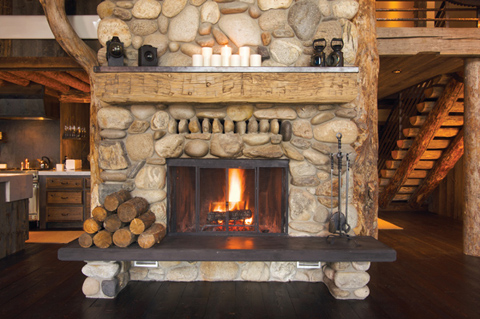Nothing sets a cozy, romantic mood like the crackle of a fire in the fireplace. The smell, the warmth and the glow can make a house feel like home. But for heating purposes, are fireplaces or stoves an environmentally-sound choice? The answer depends on the fireplace or stove you choose, the fuel you use and how you operate it.
Traditional wood-burning fireplaces can lose as much as 90 percent of their heat through the chimney, making them less than ideal as a primary heat source. Luckily, today there is a broad range of fireplace and stove options available.
Circulating Fireplace
Circulating fireplaces have heat circulation ducts built in that pull air from the room, warm it through a metal firebox, and recirculate it. Many have built-in fans to increase airflow. If you have a traditional radiant-heat wood burning fireplace, it is possible to install a circulating fireplace heater to improve your efficiency and get more warmth out of your fire. These heaters rely on electricity to operate the fans, and may need to be installed by a professional.
Gel Fuel Fireplace

Gel Fuel Fireplace
Gel fuel fireplaces burn gelled alcohol and don’t require venting. The alcohol gel burns cleanly—which means no smoke or odor. It pays to ask questions when you’re looking at gel fuel fireplaces, as some are more decorative than useful for warming a room. You can get a gel insert for your existing fireplace, or even wall-mounted and portable fireplaces. Gel fuel is popular for outdoor fireplaces or accent “fire bowls” and can often be found in striking contemporary designs.
Ethanol Fireplace
As the name implies, ethanol fireplaces burn ethanol fuel, which is a renewable fuel source produced by the fermentation of sugars and starches from plant byproducts. Ethanol emits a clean, smokeless, odorless fire, so there’s no need for venting. Because you don’t lose heat through the chimney, all of the warmth of the fire stays in the room. You can retrofit your old wood-burning fireplace with an ethanol fireplace insert, or add a freestanding ethanol fireplace in areas of your home that don’t lend themselves to a traditional fireplace. You’ll find easy-to-install ethanol burners in all shapes, sizes and styles—from freestanding to wall mounted to table top designs.
Electric Fireplace
Electric fireplaces are another option to consider in spaces that make fuel-burning and venting difficult like condos, smaller rooms in your home, or in warm-weather regions where you may want to be able to moderate the heating power of your fireplace but would still enjoy the ambience of a roaring fire. No chimney is necessary, and you can control the heat output with the flick of a switch. Electric fireplaces are easy to install and the operating and maintenance costs are minimal, plus the environmental impact is reduced because you are not burning wood.

Bigstock
Gas fireplaces, inserts and stoves are the most popular options available, thanks to the ease of operation—just flip a switch or control with a thermostat —and clean burning efficiency. Gas appliances, which are designed to burn either natural gas or propane, are also versatile: you can install a gas insert into an existing masonry fireplace and vent through the chimney, or you can install a gas fireplace or stove anywhere in your home where you can vent through an exterior wall. If your home is in a remote area off the natural gas main, you can still enjoy a clean-burning fireplace by using propane.
Coal Stove
Coal stoves are a popular heating option in many parts of the country. There are typically two types of coal stoves—stoker or batch. Stoker stoves can automatically feed the coal into the stove, while batch stoves are hand fed. Because the type of coal used—anthracite coal—is so dense, it burns for a long time and produces less smoke than wood. Coal produces a lot of ash, however (up to 10 times as much as wood), so cleaning and maintenance can be a big chore. Although coal doesn’t cause creosote buildup in the chimney the way wood does, the ash can accumulate, so you should have your chimney swept annually.
Pellet Stove

Bigstock
Already used by an estimated 1 million people in the U.S., pellet stoves burn dense pellets made of renewable biomass, often wood waste or agricultural byproducts like corn stalks and wheat hulls. Pellet-burning woodstoves and fireplace inserts are exempt from EPA certification because pellets burn so efficiently. Pellet burners have the lowest particulate emissions of all solid fuel burners, though they don’t burn as cleanly as natural gas or even oil. The price of pellet fuel tends to stay relatively stable, as it is not subject to the wild price swings found in nonrenewable fossil fuels like oil. Pellet stoves generally require a small amount of electricity to control the flow of pellets into the stove, a concern when there are power outages.
Masonry Heater
Masonry heaters are high performance wood burning appliances that produce a tremendous amount of heat. Like pellet burners, masonry heaters are exempt from EPA certification. Masonry heaters are ideal as a primary heat source because they can store heat in their large masonry mass and then slowly release it throughout the day, even after the fire has burned out. Because masonry heaters burn hot and fast, they produce less smoke—and therefore less pollution—than a traditional masonry fireplace.

Bigstock
Wood Stove
Wood stoves have come a long way in the past two decades, in terms of both design and efficiency. They come in a range of styles from space-age contemporary to down-home traditional. Burning wood contributes heavily to air pollution, so be certain you choose an EPA-certified wood stove and have it professionally installed. Look for a “Phase 2” tag, which indicates an improvement of 70 percent in particulate emissions over older models. The type of wood you burn matters, too. Use a mix of hardwoods, which will burn for longer periods of time, and softwoods, which will ignite easily. It’s important to let your wood season—or dry—for at least six months.
Fireplace Insert
If a new fireplace or stove isn’t in your budget you can improve your existing fireplace’s efficiency considerably by installing an EPA-certified wood stove insert, but be certain to have a professional handle the installation. You’ll find you need a fraction of the amount of wood for comparable heat output and create dramatically less air pollution. Alternatively, look for a gel, ethanol, gas or pellet insert for an even more eco-friendly option.

